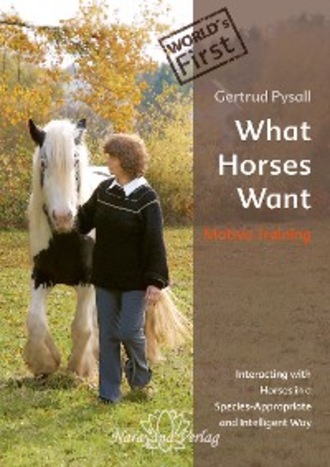
Полная версия
What Horses Want
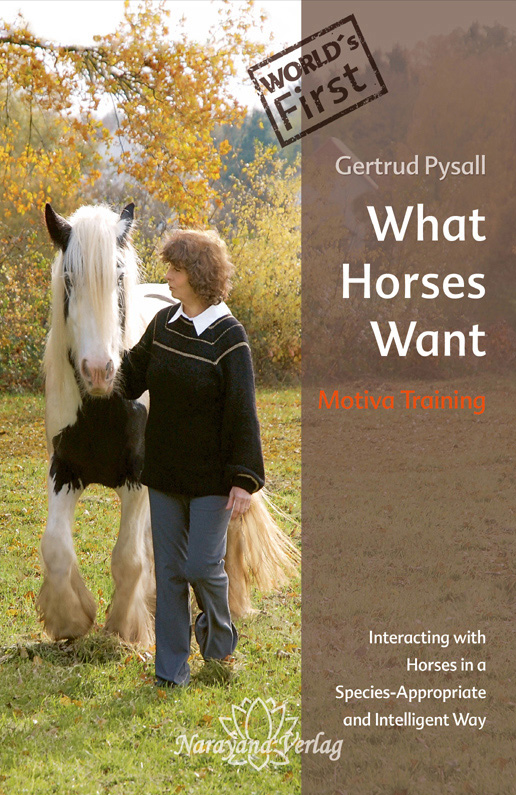

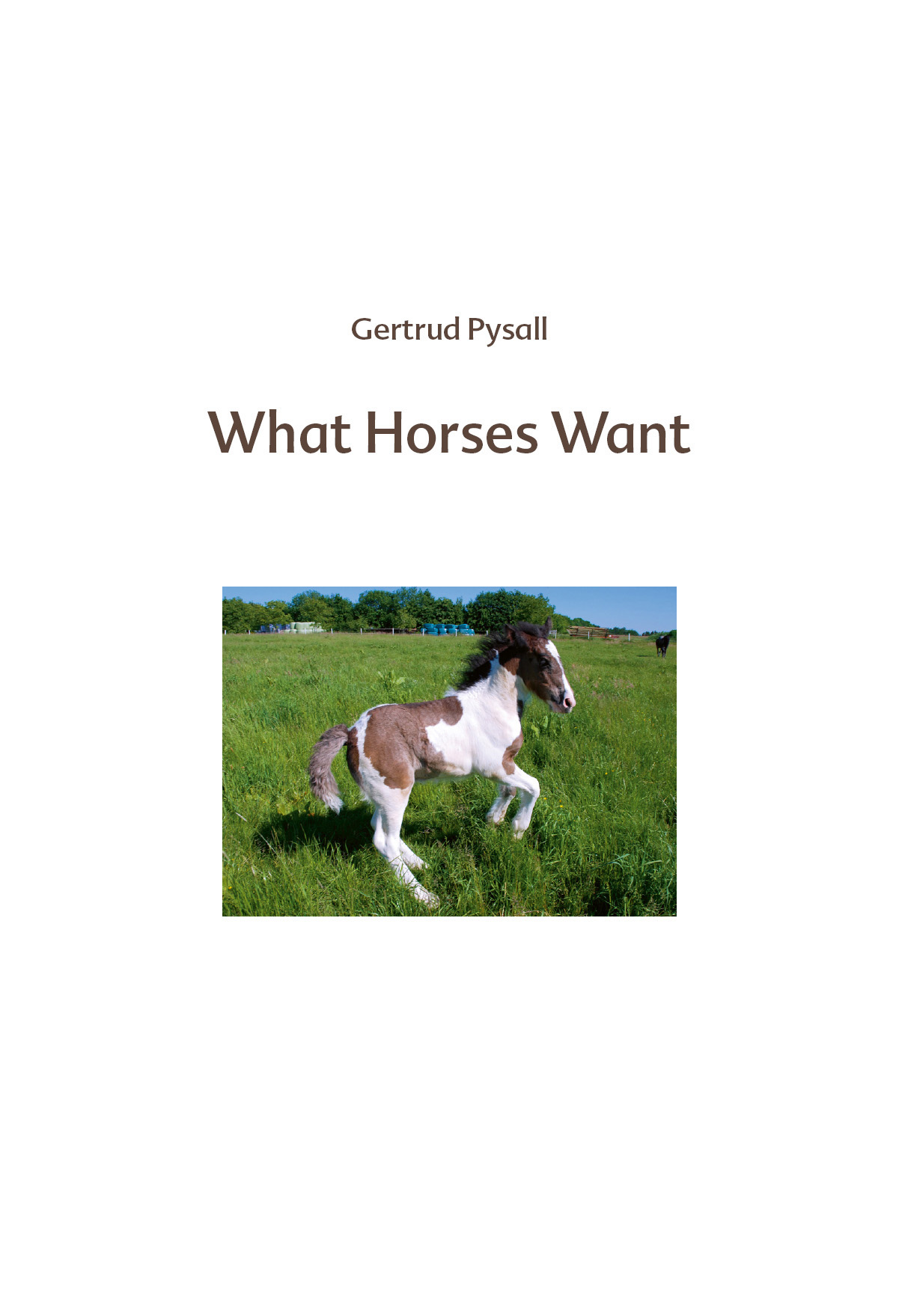
If we want to do justice to the nature of horses,
We need to leave them as they are
And give them what they need.
Gertrud Pysall
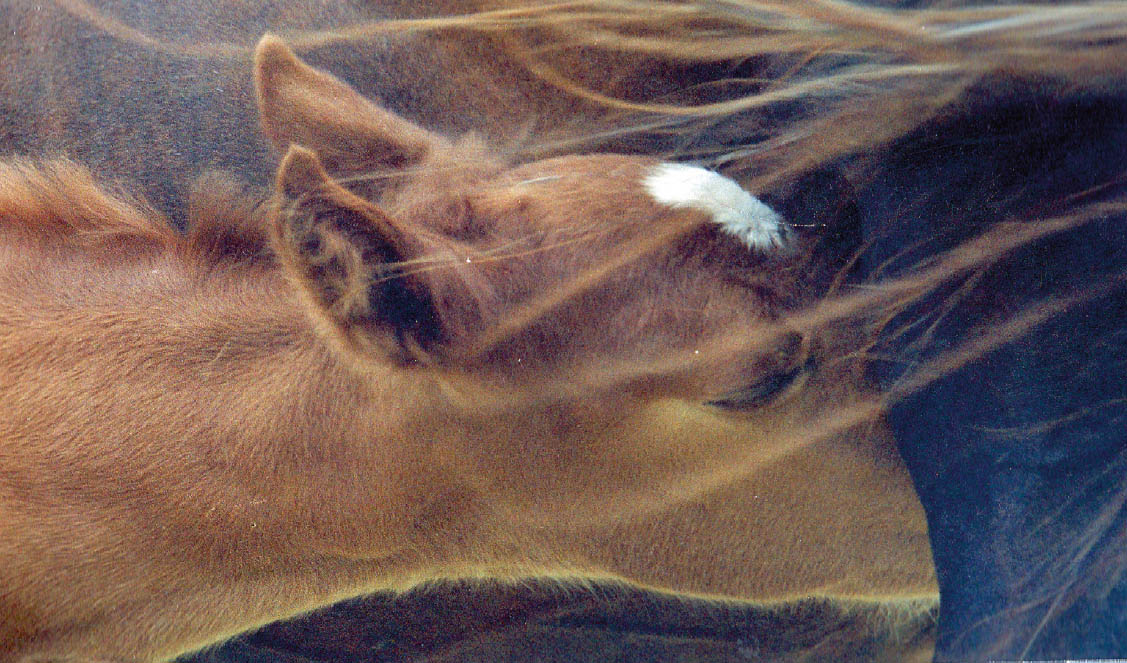
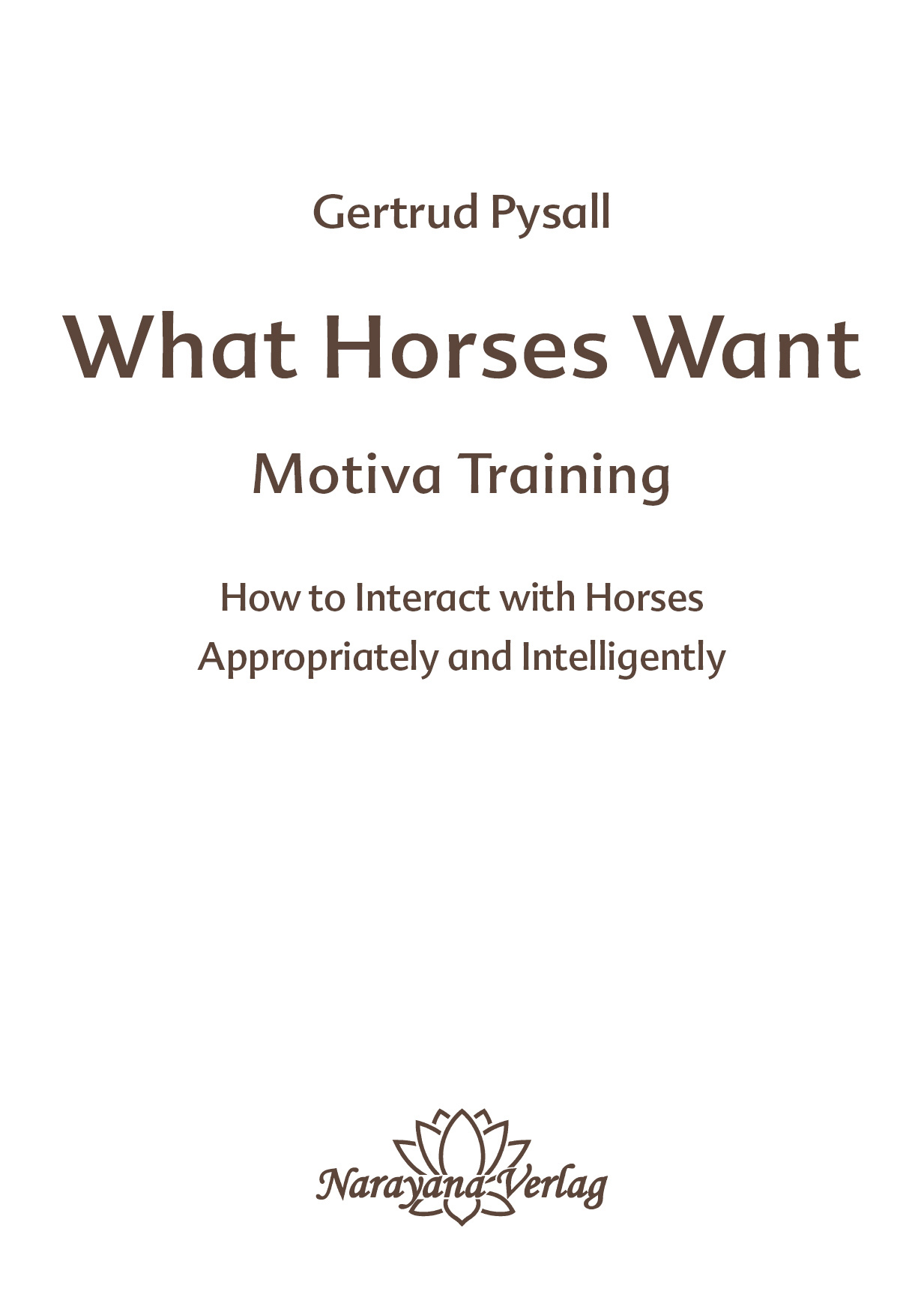
Gertrud Pysall
What horses want
Motiva Training®
How to interact with horses
appropriately and intelligently

First English Edition 2015
ISBN 978-3-955820-80-0
First German Edition 2012
Second extended and updated German Edition 2013
ISBN 978-3-943309-40-9
Photographs p. 2 © Ulrike Henke
Cover image and other photographs © Gertrud Pysall and Isabell Schmitt-Egner
Translation: Antje Papenburg
Publisher:
Narayana Verlag GmbH, Blumenplatz 2, 79400 Kandern
Tel.: +49 7626 974970-0
E-Mail: info@narayana-verlag.de
www.narayana-verlag.de
© 2015, Narayana Verlag GmbH
All rights reserved.
No part of this book shall be reproduced, stored in a retrieval system, or transmitted by any means – electronic, mechanical, photocopying, recording, or otherwise – without written permission from the publisher, except in the case of a reviewer, who may quote brief passages.
All trademarks and copyrighted items mentioned are the property of their respective owner (even if not designated).
While the author and publisher have used their best efforts in preparing this book, they make no representations or warranties with respect to the accuracy or completeness of the contents of this book and specifically disclaim any implied warranties, merchantability or fitness for a particular purpose. Neither the publisher nor the author shall be liable for any loss of profit or any other commercial damages, including but not limited to special, incidental, consequential, or other damages.
DEDICATION
Millions of people own horses, ride horses or simply like horses.
This book is dedicated to those who are open to my ideas.
And particularly to those who are inspired by this book to think,
change their approach and consequently
to improve their interactions with horses; in short, to those who
understand me and my aims – and thus understand horses better.
I also would like to dedicate this book to my brother,
Peter Lindemann, who took the time and spent
an hour every week listening to me patiently.
He was there when I needed help and was a great
support in writing this book.
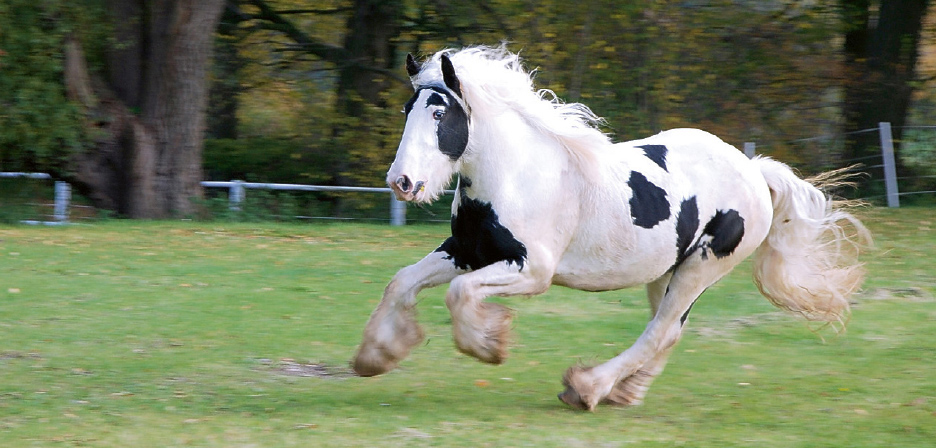
Table of Contents
Copyright
Dedication
Foreword
Preface
Introduction
I. THEORY
1. The Horse in Human Hands
1.1 Horses As Partners
1.2 Horses As Friends
1.3 Horses As Vassals
1.4 Horses As Status Symbols
1.5 Horses As Therapists
1.6 Horses As Students
2. Humans As Teachers Of Horses
2.1 The Horse in Education and Training
2.2 The Horse and Punishment
2.3 The Horse and Praise
II. PRACTICAL APPLICATION
3. Motiva Training
3.1 Origin and Research
3.2 Introduction
3.3 What is Motiva Training?
3.4 Psychological Considerations Regarding Motiva Training
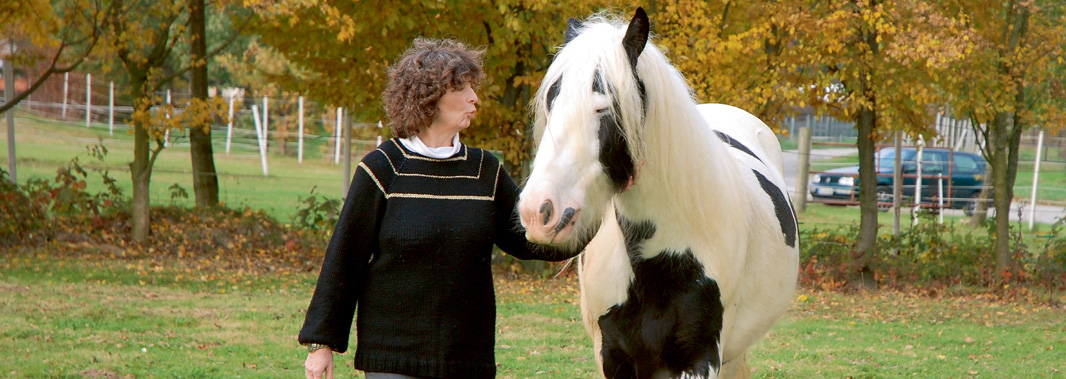
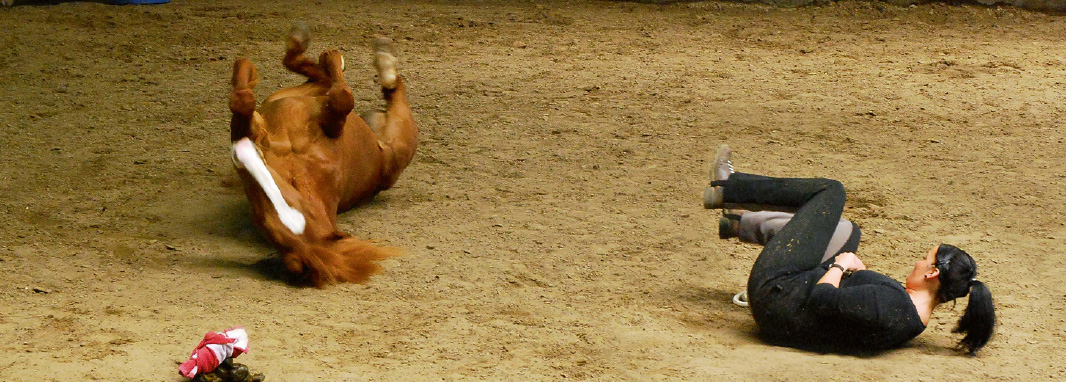
4. Communication System
4.1 The Rules
4.2 Expressions
4.2.1 Equine Expressions
4.2.2 Human Expressions
4.3 Examples of Statements/Signals During the Course of Communication
5. My Training Methods
5.1 Critical Examination of Self- Perception
5.2 Recognising Our Own Motives
5.3 Conflict Recognition and Options for Peaceful Conflict Resolution
5.4 Training Body Movements and Sense of Space
5.5 Training Aids and Tools
6. Motiva Experiences With Horses
6.1 Human and Horse
6.2 Horses with Other Horses
6.3 Case Studies
Final Thoughts
Acknowledgements
References
About the Author
Index
Copyright
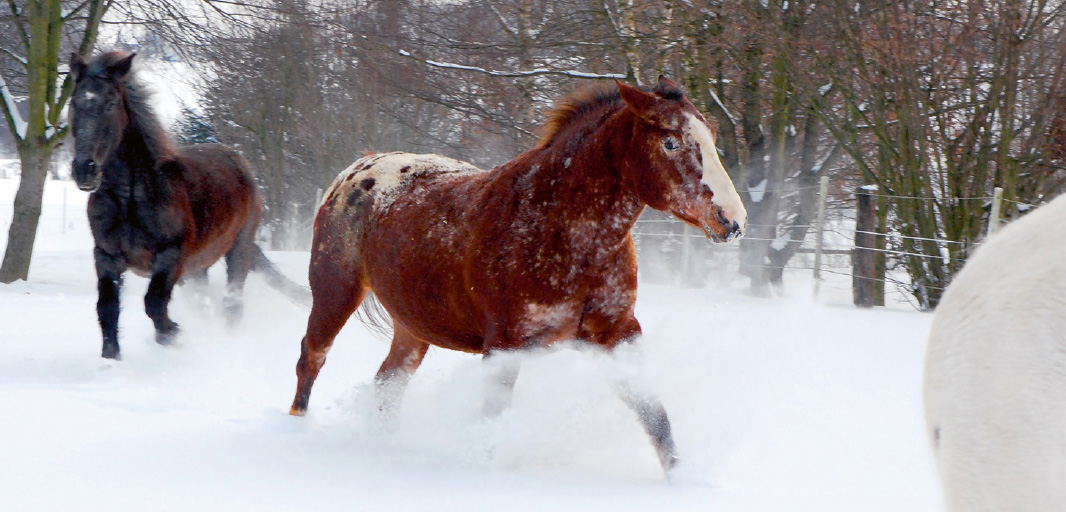
Foreword
Many years ago, on a sunny autumn day, a seemingly never-ending train ride took my family and me from Bavaria to a village of just 300 inhabitants on the edge of the Eifel Region. After we arrived, I found myself standing in the yard of our new home. While the movers brought our belongings into the house, I let my eyes roam over the neighbouring meadows and fields. Suddenly, a horse appeared on the other side of the wire mesh fence – beautiful, large, dark brown with a black mane and tail and a small white dot on his forehead. He gave me a friendly look. I was just nine years old, and until that moment I had never had a memorable encounter with a horse, but just then I lost my heart to “Alex.” At the same time I was scared of him, as he seemed so huge and strong. Still, I dared to stroke his warm, wet nose and was overcome by an indescribable sense of happiness. Alex started pawing the ground with his front foot and his hoof got caught in the wire mesh. As he was unable to free himself, I plucked up the courage to bend down and, with great effort, removed his big hoof from the wire mesh. At that moment I realised what I wanted to be when I grew up: a veterinarian! Unfazed by the hustle and bustle going on around me, I ran to my parents and informed them in a very serious tone of my ambition. They were the first, but not the last, to give me a belittling smile, but they stood corrected when I actually started my degree in veterinary medicine ten years later.
Such are the far reaching consequences of the magical encounter between human and horse!
Like countless other young girls, I tried to spend the majority of my spare time in the presence of horses. I avoided riding schools and stables, however, and dedicated my time to grooming and looking after “my” ponies and horses. These were privately owned and the owners allowed me to look after them. Owning a horse myself was out of the question anyway.
I have always resented how horses were usually kept and how they were treated. I felt that in many, if not most cases, something vital was missing: a true understanding of the horse as a living creature and his needs. Often, a horse was treated like a commodity which could be exchanged at any time. If he did not “perform” correctly, he was disciplined, frequently quite ruthlessly.
The established training methods seemed more than questionable to me, and Horst Stern’s (Remarks About Horses) encouraged me to give up riding entirely.
Years later, when the first “horse whisperer” appeared on the scene like a shining star, I began to be hopeful, but a certain discomfort remained. After reading this book by Gertrud Pysall, I now know why: many so-called “horse whisperers” clearly have not learned how to communicate with horses, to interact with them using only gestures and vocabulary from the equine communication system, even if they try to give this impression.
What Horses Want by Gertrud Pysall will inspire everyone who feels a connection with horses. If you are open, curious, and maybe even willing to critically examine your own behaviour, this book will open up a unique, exciting and previously undiscovered world, where it is possible for human and horse to interact harmoniously and where the horse is shown the understanding, respect and love this beautiful creature deserves!
With this in mind, I hope that Gertrud Pysall’s book will be widely distributed and will lead to a paradigm shift in the equestrian world.
Shiela Mukerjee-Guzik, DVM
Preface
I have been fascinated by horses from early childhood. I found them more captivating than any other animals. I watched every episode of Fury on TV and dreamed of a very close friendship and relationship with a horse. I had the unforgettable experience of sitting on the back of a pony, while being led twice around a family friend’s backyard. Going round once did not take much longer than a minute, but I will never forget it. It was heaven on earth, the epitome of joy – two rounds on a pony in a concrete yard. From then on, this indescribable feeling became my personal benchmark for happiness. Many years later, in the Eifel Region, I experienced something similar when I was allowed to ride through the village on a very broad draught horse without a saddle. I did not have any riding skills, just sat blissfully astride the animal. He just trotted along nicely, carrying me to his stable. (I did not realise at the time that this was not a safe thing to do, but I would not have cared anyway.) These two experiences formed my own image of horse riding and the relationship between humans and horses. In the 1950s, horse riding was an upper class privilege, and I decided to take riding lessons with the first money I would earn.
This is exactly what I did in 1969 in an equestrian centre in Idar-Oberstein. The typical groundwork lessons, that I used to look forward to immensely, were followed by riding lessons on school horses. And this was where disillusionment started to set in. I saw how unhappy these horses were. They attempted to bite and to kick; there were warning signs next to the boxes, telling us which horse we were not supposed to touch. I witnessed a couple of falls – my own and those of my fellow students – because riding instructors whipped the horses to encourage them to speed up.
The riding lessons were bad and so was the atmosphere. The post-lesson drinks seemed more important than anything else. Students and horses were shouted at. I could not learn anything under these circumstances and started to be more scared of riding, rather than feeling elated. When I changed jobs, I also changed equestrian centres. Full of hope, I started afresh, only to experience the same conditions and principles. I tried out one riding school in my neighbourhood after another but could never find what I was looking for: a respectful and dignified interaction between humans and horses. An interaction that would enable me to re-experience the feelings I could remember so well.
The only ray of hope was a private horse riding and holiday farm in Oberstaufen. At Schlippe Farm I was allowed to ride privately owned horses. It was not an “equestrian factory” and the Schlippe family treated the horses and me with love and respect. My hopes were restored and I spent all my holidays and days off at the stables – and learned how to ride.
Later on, I spent a few years living in Berlin. Riding was almost impossible there, and my dream of owning a horse in the countryside became stronger and stronger. I moved to the countryside, bought a horse from a holiday farm and imagined my dream had come true. Far from it. The horse was difficult and I did not know enough (I was a reasonably good rider, but that was it).
I built a large stall for the mare I called Hella. I thoroughly mucked out the stall every day, led her onto a field, provided her with a companion in the form of my friend Gunda’s horse, groomed her meticulously and gave her lots of cuddles. But she did not put her trust in me, not in the way I had imagined. For example, she never wanted to hack out with me and that made me think. If nothing I did was enough or I was not doing the right thing, what should I be doing? I wanted to know what horses want, what horses need to be happy and content. I was searching for the conditions that would allow me to experience with a horse what was anchored in my imagination: a deep sense of trust, harmonious mutual understanding, closeness that could be established and maintained without fear, stress or pain for either party. I had already felt it, I knew it was possible and I really wanted to find this feeling again.
I tried to find as much information as possible. I read scientific journals, talked to riders, horse breeders, vets, and met Manfred Pysall who was running “Hunsrücker riding workshops” and who is now my husband. He was equally frustrated by the conventional treatment of horses he had been taught as a riding instructor. He was also looking for a different direction. We held many attitudes and desires in common. Eventually we opened up our own riding school in a small place called Ellenberg near Birkenfeld. During the 1990s, as part of the “Hunsrücker riding workshops”, we ran some weekly courses, such as “Horse riding without fear or stress” and “Learning to ride horses – but differently”. Four years later, the facilities in Ellenberg had become too small for us, and we moved to our current riding school, here in Spenge. Here we have an indoor and an outdoor arena, boarding stables and enough space for 70 horses and ponies including a large paddock and plenty of fields. We have been established here since 1994. All through the years, while we were developing the riding school, lessons and courses, I held on to this memory of feeling perfectly in tune with a horse. I knew, I could find it again, and the secret had to do with horses’ needs. I wanted to find out

Introduction
What horses want or, phrased as a question: what do horses want? became my guiding principle for interacting with them. Previously, when I lived in Ellenberg, I used to observe our little herd of twelve animals often and very closely in order to discover the secret of what their needs really were. I wanted to understand their personal needs and how these are expressed in the herd, if and how these needs change over the course of the seasons and when new members join and old ones leave the herd.
Through intensive observation, numerous video recordings and studying these recordings in slow motion, I discovered the subtle signals horses give each other, which were repeated so many times that I recognised a pattern. This was activity, this was information. I began to understand. I had never read about this in any of my numerous books on horses. Others apparently had little or no knowledge of this information. After moving to Spenge I had even more opportunities to carry on with my research. Over time, we owned six herds of various compositions, 70 animals in total. This really improved the conditions for my research. I was able to film naturally occurring situations at all times as well as setting the stage for studying certain constellations. I analysed and catalogued these observations in uncounted hours.
In order to use my knowledge for the benefit of horses and to impart it to other people, I developed a method called Motiva, which was patented in Munich in 1996.
I became aware that horse herds are characterised by a very complex language and highly developed social behaviour which also includes a set hierarchy. Every horse knows his place in the hierarchy and this gives him security and certainty.
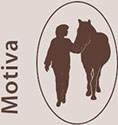
A society of horses is based on the interactions of individual animals. For this community to work, social rules are necessary. They guide interactions in the herd. Basically, they are very simple and robust rules that have been passed on and have stood the test of time. They can be expressed and enforced using the equine communication system. Both unilateral and reciprocal rights and obligations are passed down from older to younger herd members. Within the society of horses, it is hardly possible to ignore the authority of the lead animals. This authority establishes a natural order in the herd and ensures continuance of the social rules and of the entire herd, as well as the development of a sense of belonging.
Motiva teaches precisely these rules and relationships. It comprises knowledge about the social rules as such, as well as the highly developed modes of expression that horses use to convey, enforce and monitor these rules. Not only does Motiva teach humans to understand over 130 expressions of horses, but also how to use these expressions to speak with them. Motiva also trains people to recognise and resolve conflicts in a non-violent manner and to communicate effectively.
When we talk about “communicating with horses”, we must recognise that “understanding” is an integral part of “communication.” We need to gain a deep understanding of their nature, their social rules and rituals, their instinctive behaviour, their fears and decisions, their ways of life. The ability to speak and understand their language, informed by this complete body of knowledge, leads to the answer to our question: what horses want. And this clearly is the insight:

Info
Motiva comprises knowledge about the social rules as such, as well as the highly developed modes of expression that horses use to convey, enforce and monitor these rules.
EQUINE EXPRESSIONS

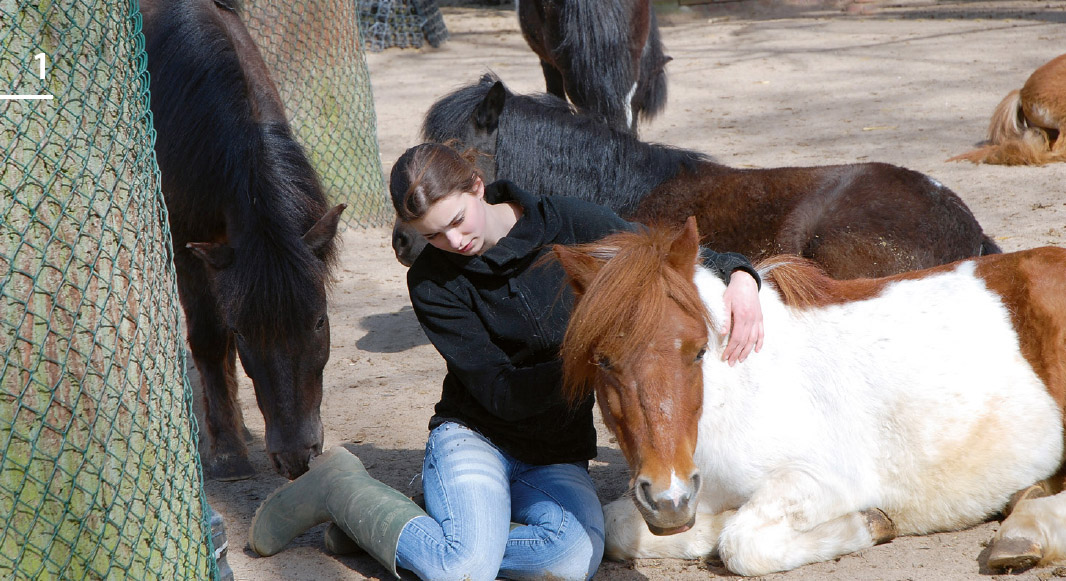
First tentative contact with a human
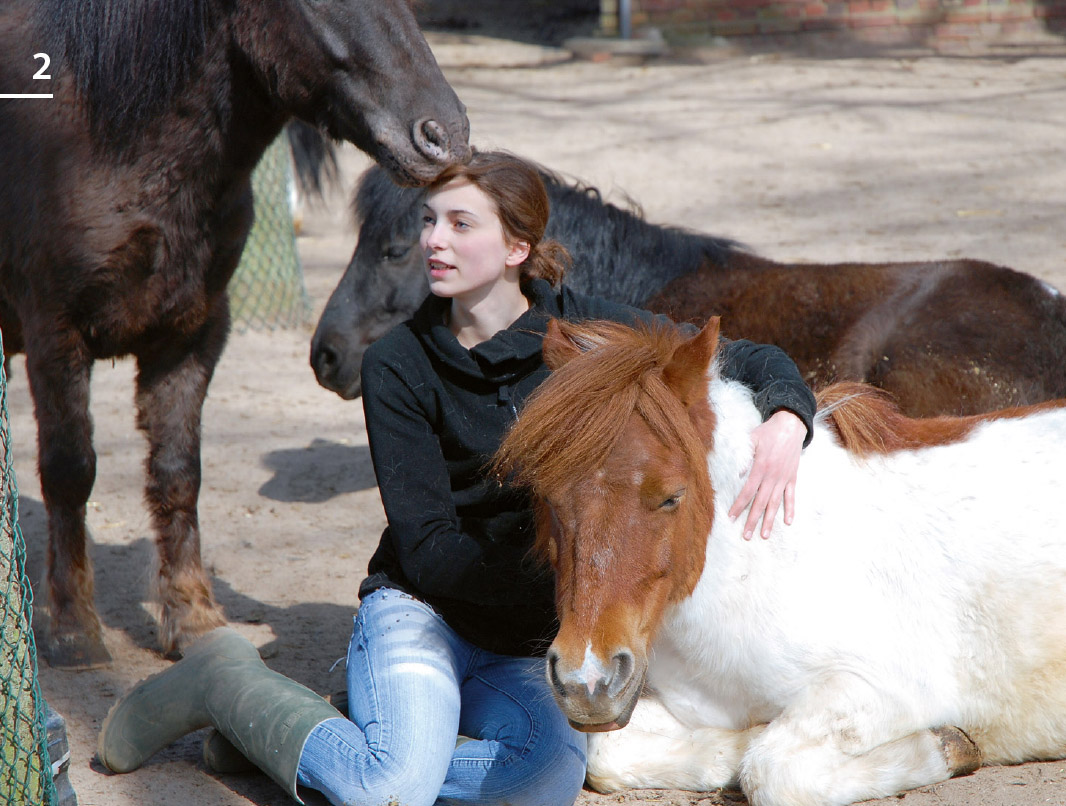
“I will guard you while you rest.”
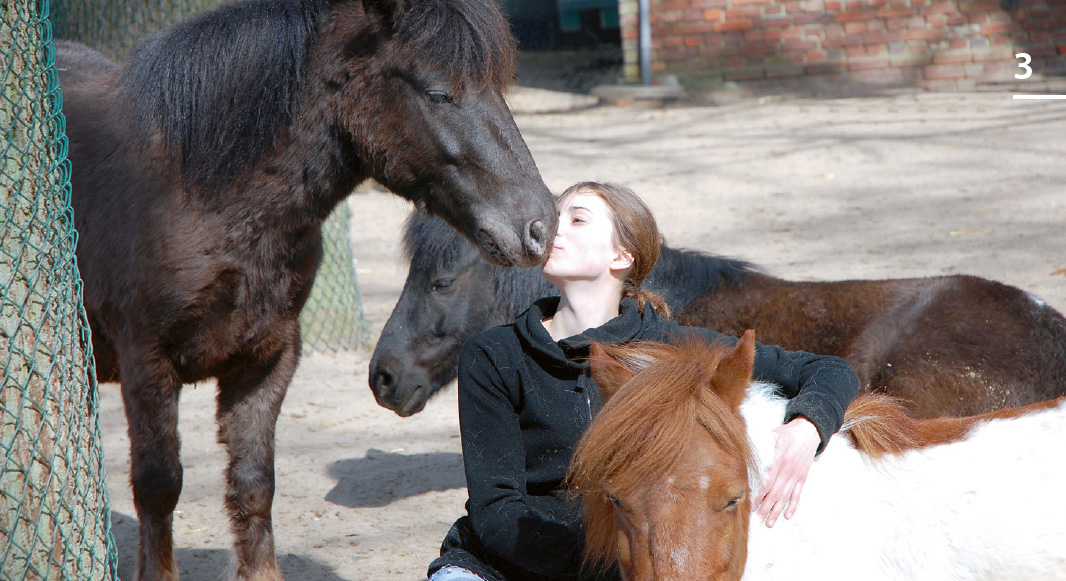
Blowing softly into the nostrils as a sign of mutual friendship
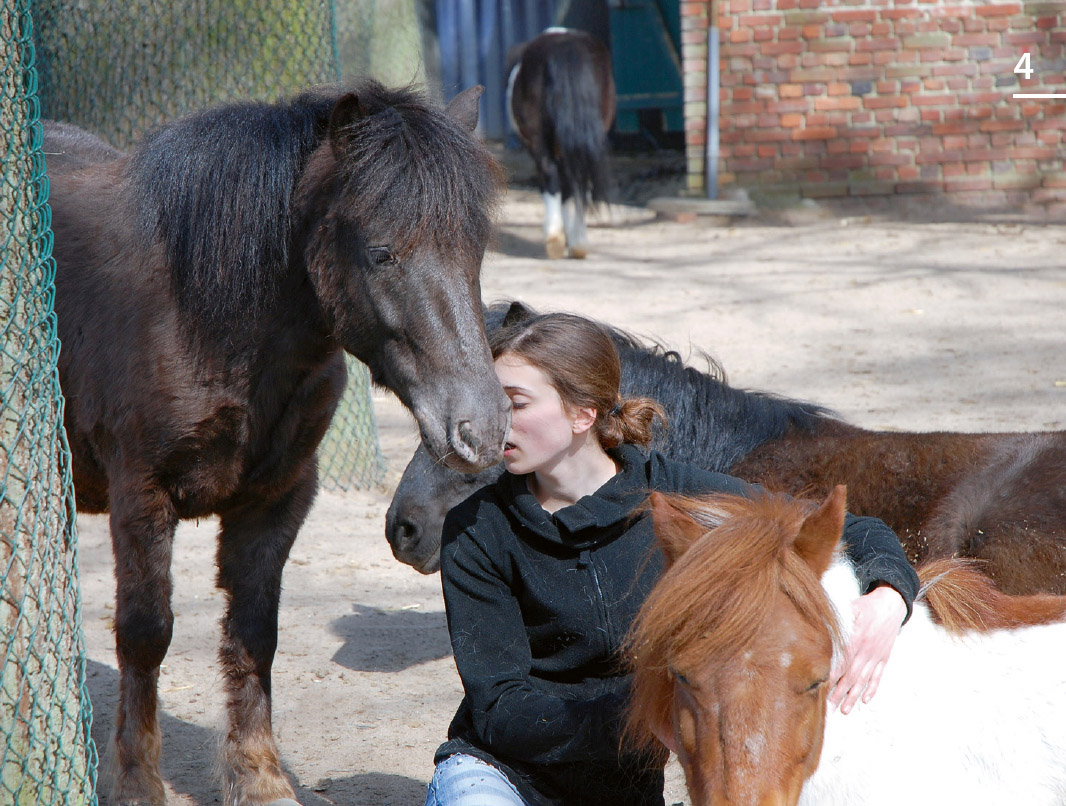
Nuzzling as a gesture of friendship
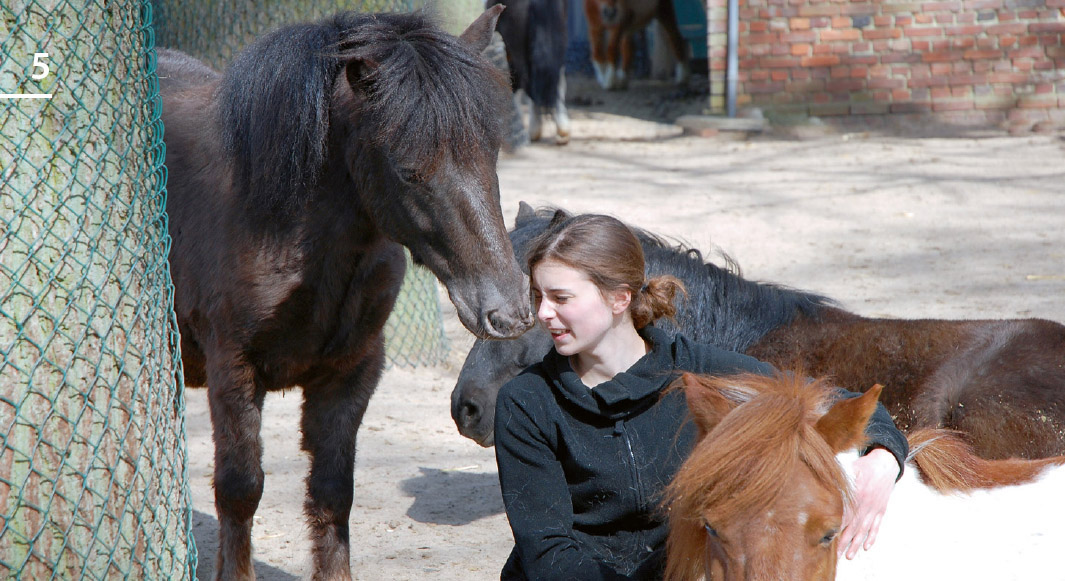
The horse is blowing quietly to express contentment
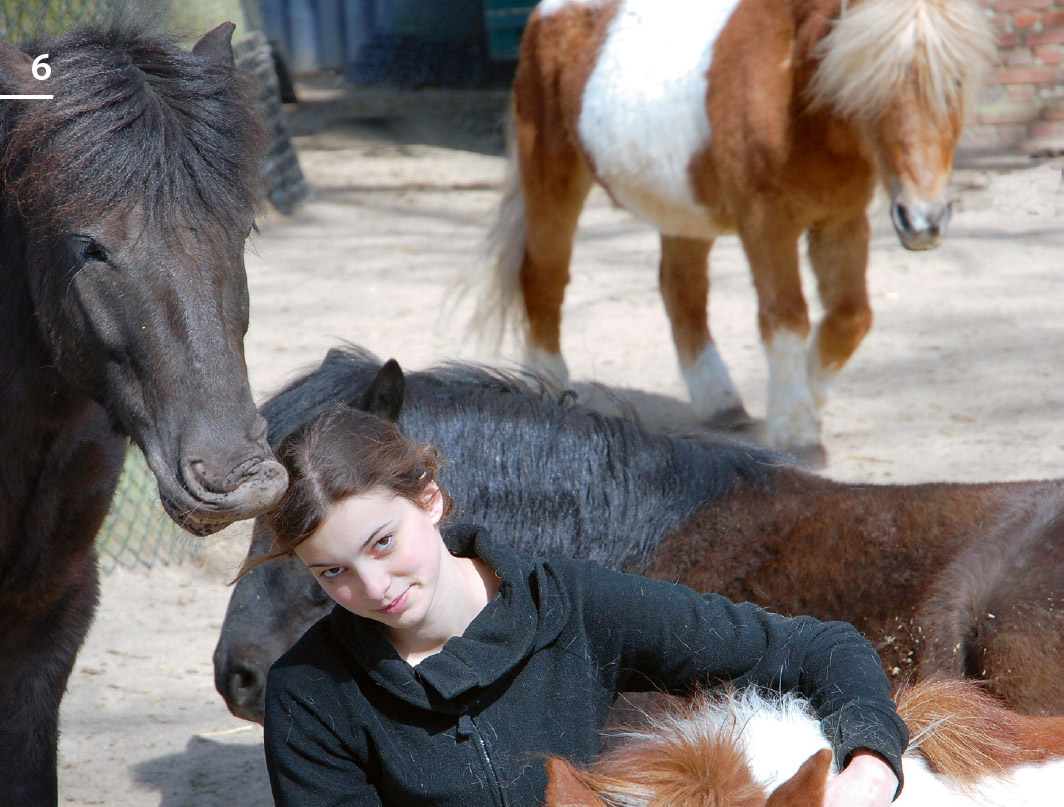
Invitation for mutual scratching using his lips
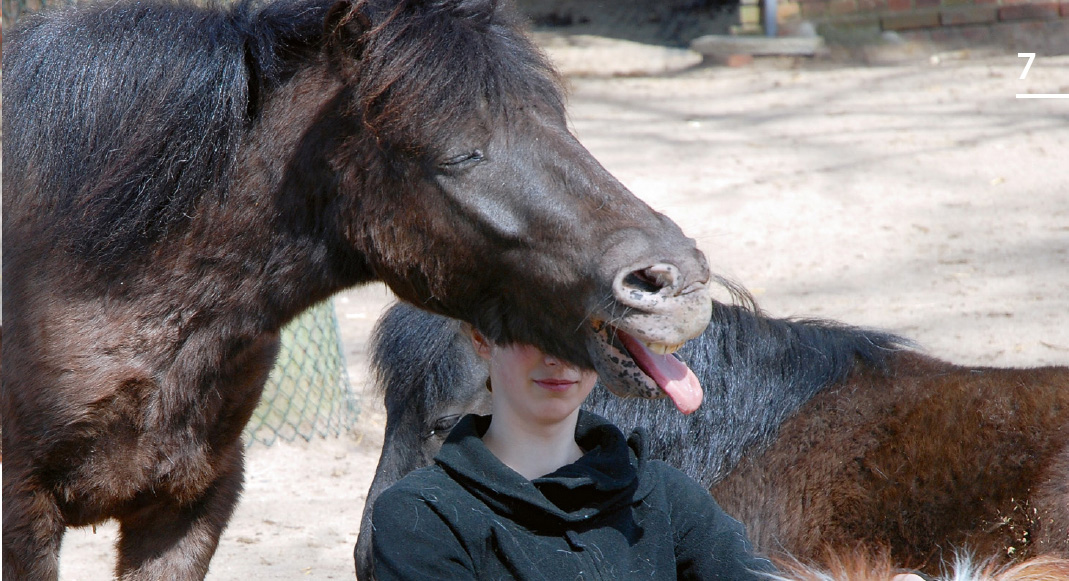
Yawning as an appeasement gesture: “I do not want to invade your space”
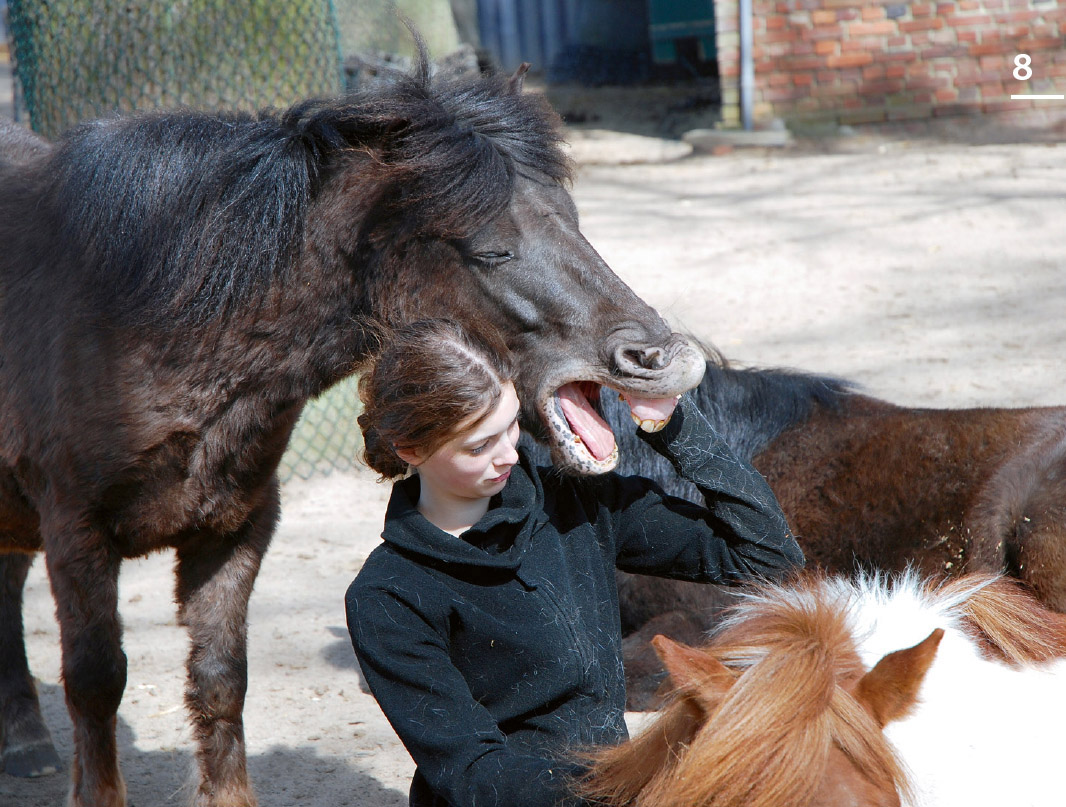
Yawning is repeated to reinforce the previous statement
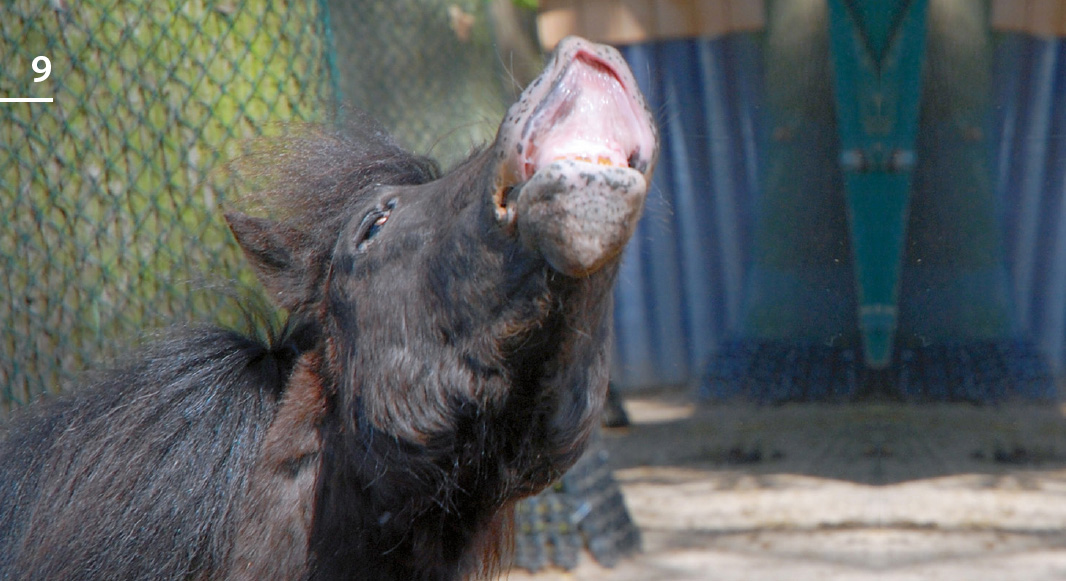
Checking for pheromones
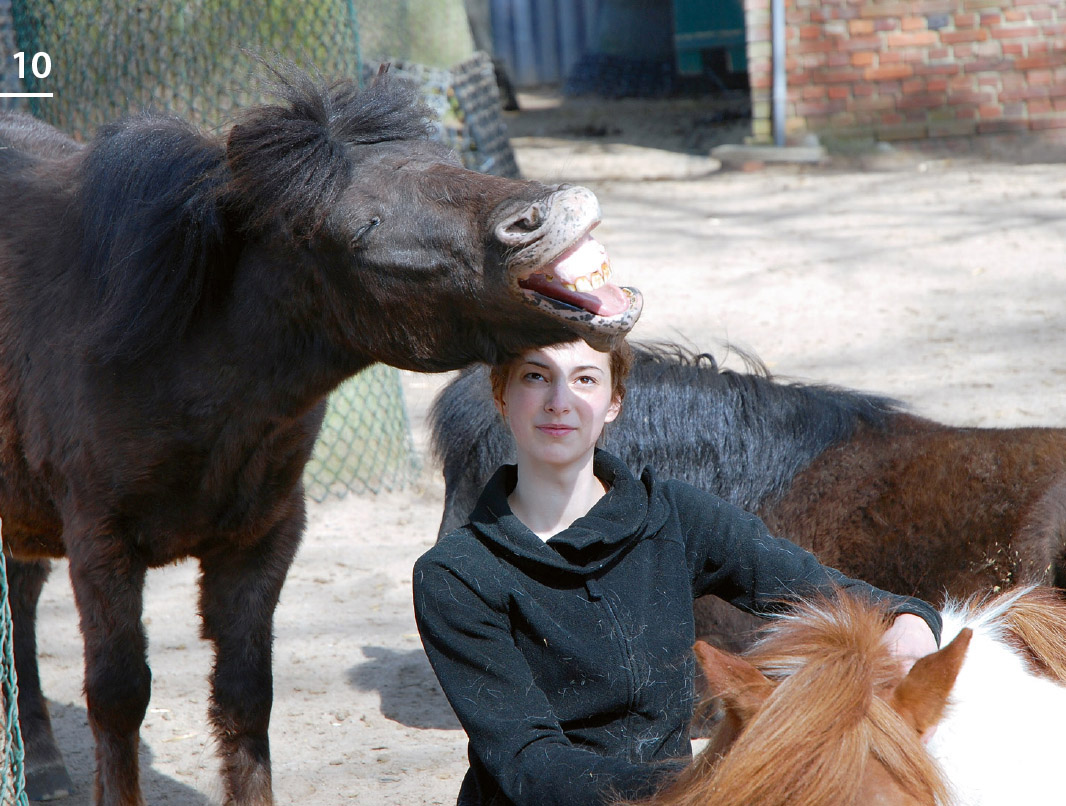
Once more easing the situation by yawning
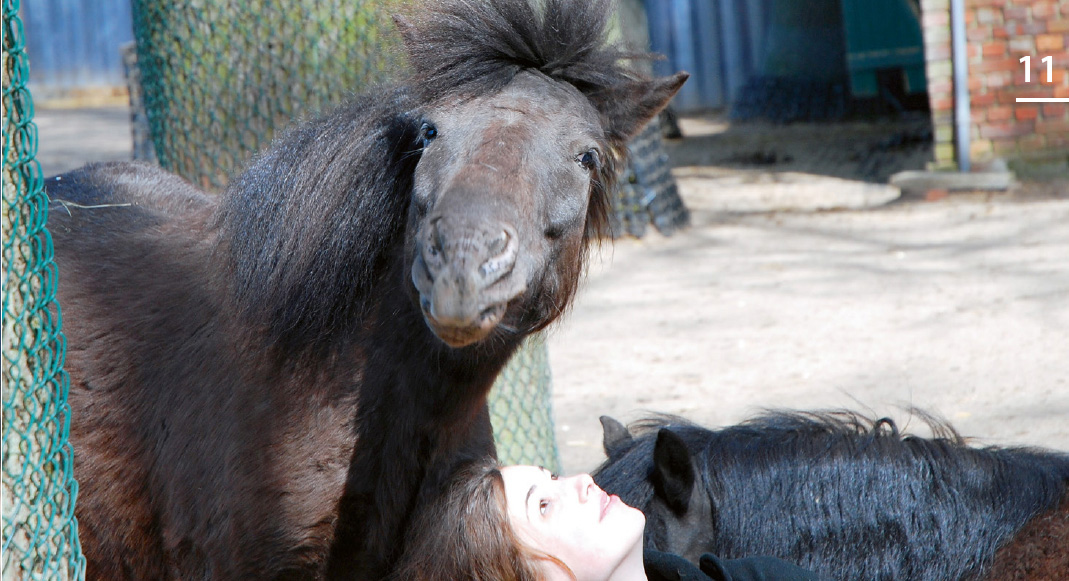
Shaking head, indicating that he does not want to offend the human (higher rank).
Info
Motiva teaches people to understand and communicate using over 130 equine expressions.
I. THEORY
1. THE HORSE IN HUMAN HANDS
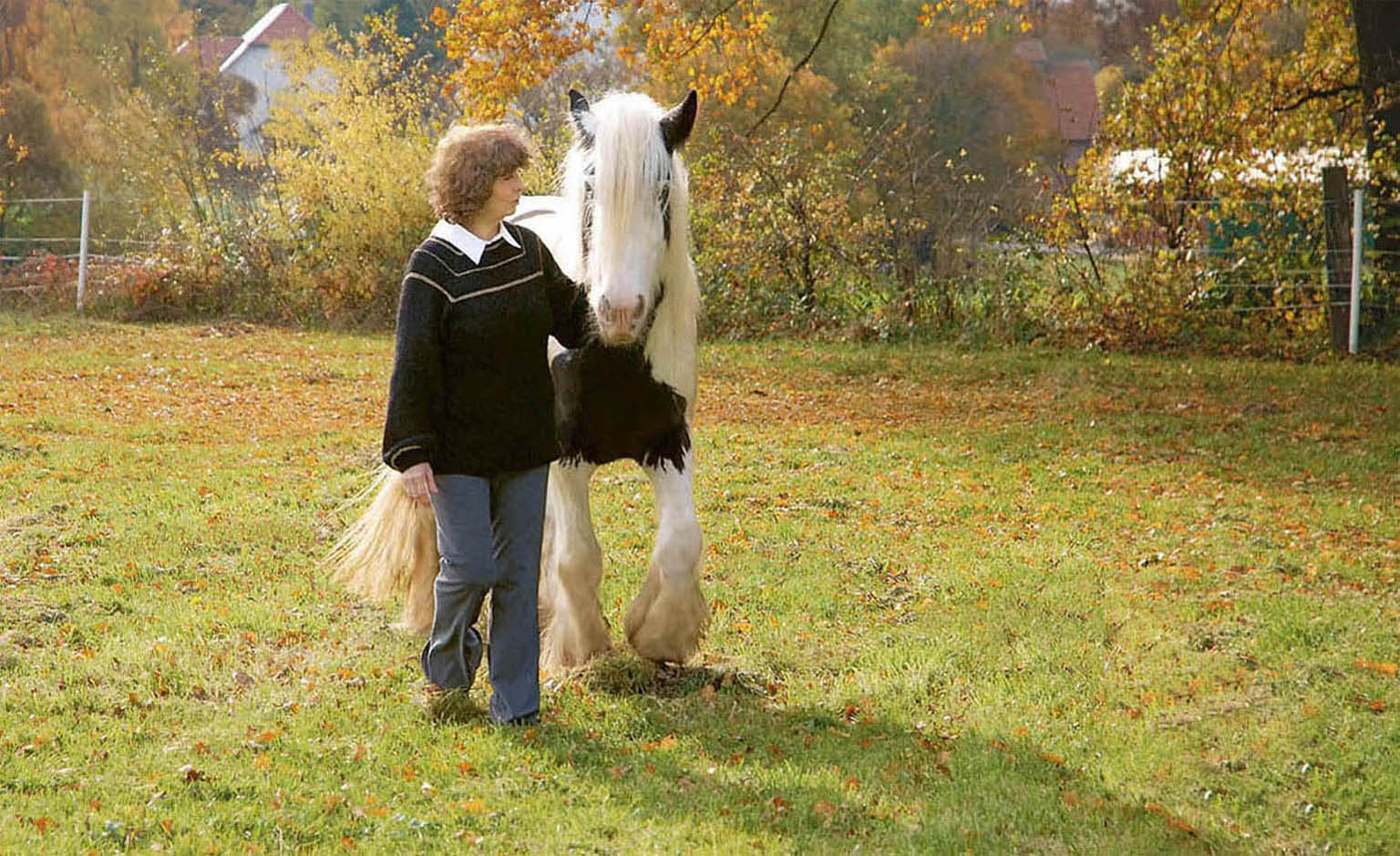
1. The Horse in Human Hands
When Manfred Pysall and I first came to our farm in North Rhine-Westphalia (NRW), we found it to be an ordinary equestrian centre with the type of customers we were familiar with from our past professional experience. Western riders mixed and competed with English riders. After a settling-in period during which we observed the horse owners and riders, we established some new rules. One of these rules was that on our farm, horses must not be beaten. We also prohibited certain methods which are used to train horses by inflicting pain. Before long, some people were looking for a different riding centre where they could continue to train using the methods they were accustomed to.
Over the course of time, I was able to observe a very interesting phenomenon. It happens all the time: new people come to the farm and are struck by the atmosphere, the peace and quiet, the happy horses; they describe it as being in an oasis. It is very healthy for them not to experience fear and aggression when interacting with horses and to learn that there is no need for it at all. Our horses, trained in a very different way, are easy to ride, are very content and radiate calm and trust. Almost everyone enjoys this.
However, as soon as these people realise that the rejection of traditional training methods also means they have to reflect upon their thoughts and actions, to improve and to retrain, some of them decide to switch stables. Even though they are fascinated by our philosophy, they are not always able to overcome their inner obstacles, a process which requires critical self-examination and sometimes changes in attitudes and behaviour. It is much easier to think that only the horse has to learn and change - not the human.
Freya
THE SECRET OF HONESTY



